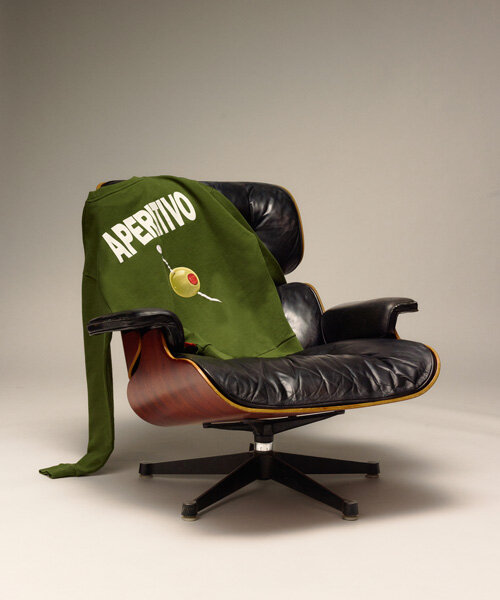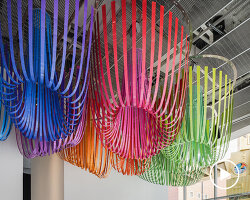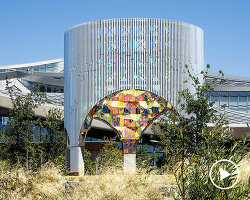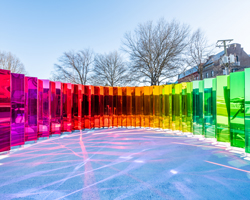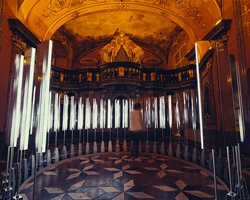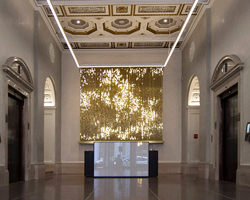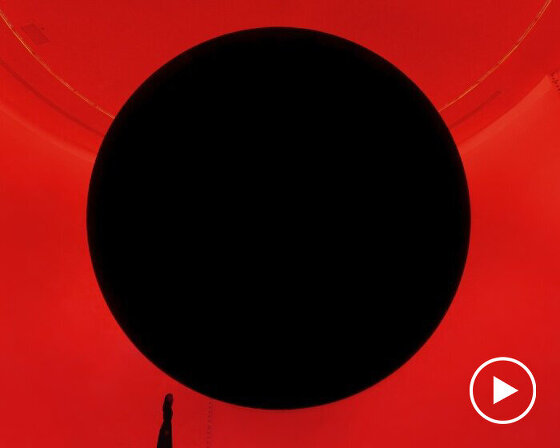new york based design studio SOFTlab was commissioned by HP for ‘the lab’ to create an experience combining many bespoke installations by various artists, curated by ‘meta’ at the panorama music festival in NYC. the studio’s project, named ‘volume’, is an interactive cube of responsive mirrors that redirect light and sound to spatialize and reflect the excitement of surrounding festival goers. the paired down details of the installation are meant to foreground the use of light and sound as fundamental building elements of space.

the installation reflects light and sound in a cube of rotating mirrors
SOFTlab‘s installation redraws the line between what is considered ephemeral versus physical, as the installation remixes space and the character of the attendees, while gazing back at them with empathy and exuberance. the project was influenced by the ability of light and sound to form space through reflection and their dependence on atmosphere. although we often consider this space empty, the air around us is a material made of many particles. small changes in this volume of transparent material allows light and sound to move through space. the mirrors in the installation represent these particles acting in harmony to challenge and enhance what we see.

The installation reflects light and sound in a cube of rotating mirrors.
the installation is made of a grid of 100 mirrored panels that each rotate individually. an array of cameras overhead track people as they move around the installation. using a weighted average of the various people being tracked, the mirrors rotate to face the nearest person. individually addressable LED’s along the sides of the mirrored panels respond to the ambient sound in the space around the installation. ‘volume’ is powered by an array of seven HP Z2 mini workstations. six of them analyze the information from six depth cameras above the installation, while the seventh compiles this information, runs the interface that controls the installation, and sends the data to the lights and motors that drive the mirrors. the combination of compact size and power allowed us to use an array of the workstations with a very small footprint.
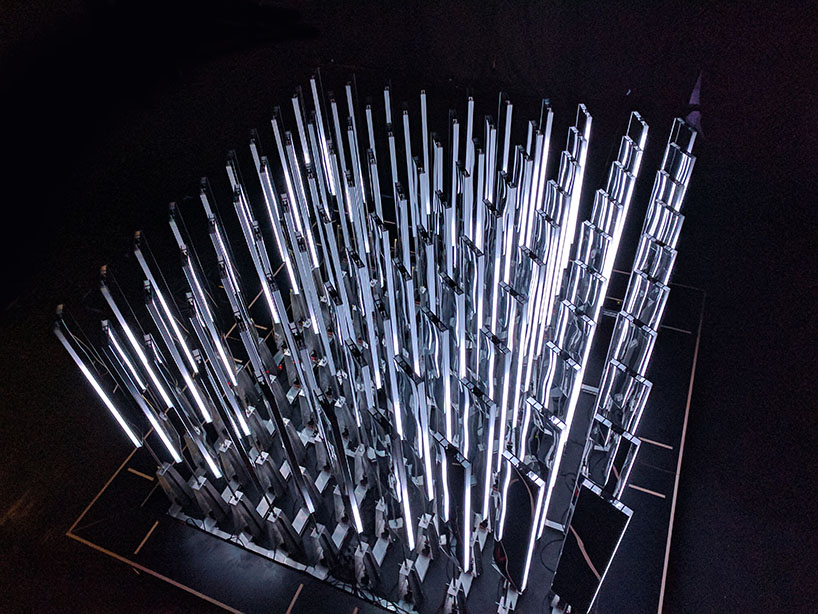
the mirrors use a weighted average of the people being tracked from above
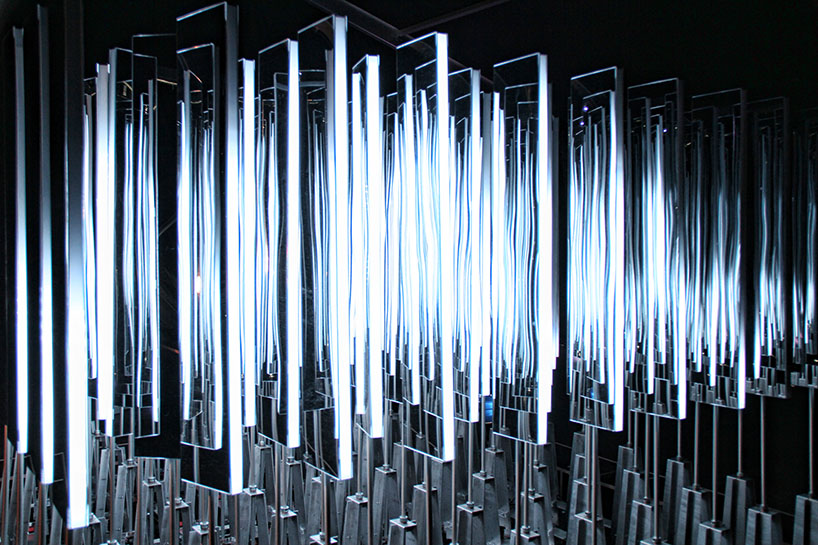
individually addressable LEDs are integrated on each side of the mirrored panel

the lights are programmed to produce various behaviors when activated by sound
volume_v10_sim 8_1
video © SOFTlab

the interface that controls the installation was created using processing

each mirror and its stand were made as modular elements so they could easily be ‘plugged’ into the grid installed on the floor
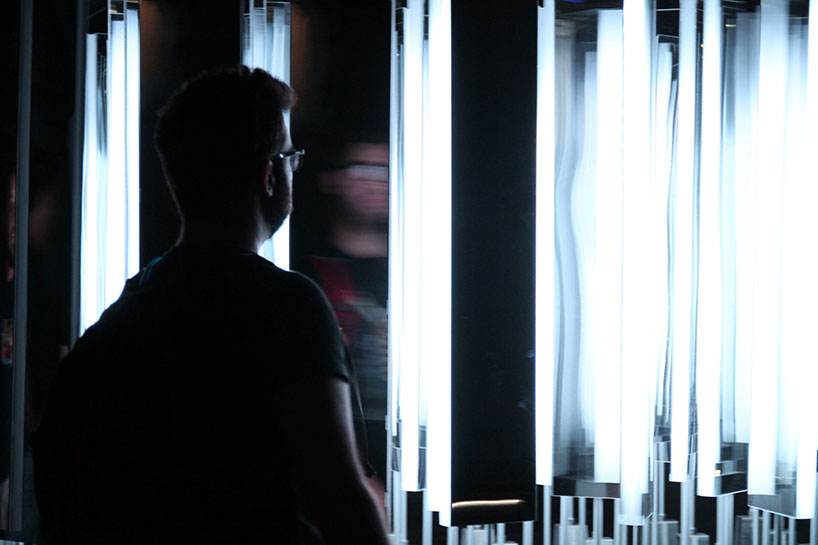
the reflections of viewers are mixed in with the light and sound

each mirror is rotated using a custom made continuous rotation servo
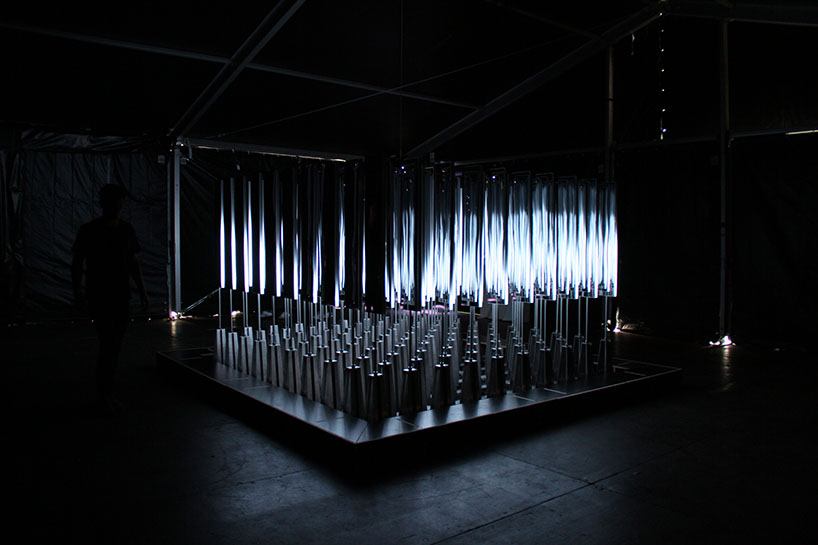
light pulses and animates through the grid giving the response to sound a spatial quality

visitors are reflected into the volume of mirrors along with the reactive lights
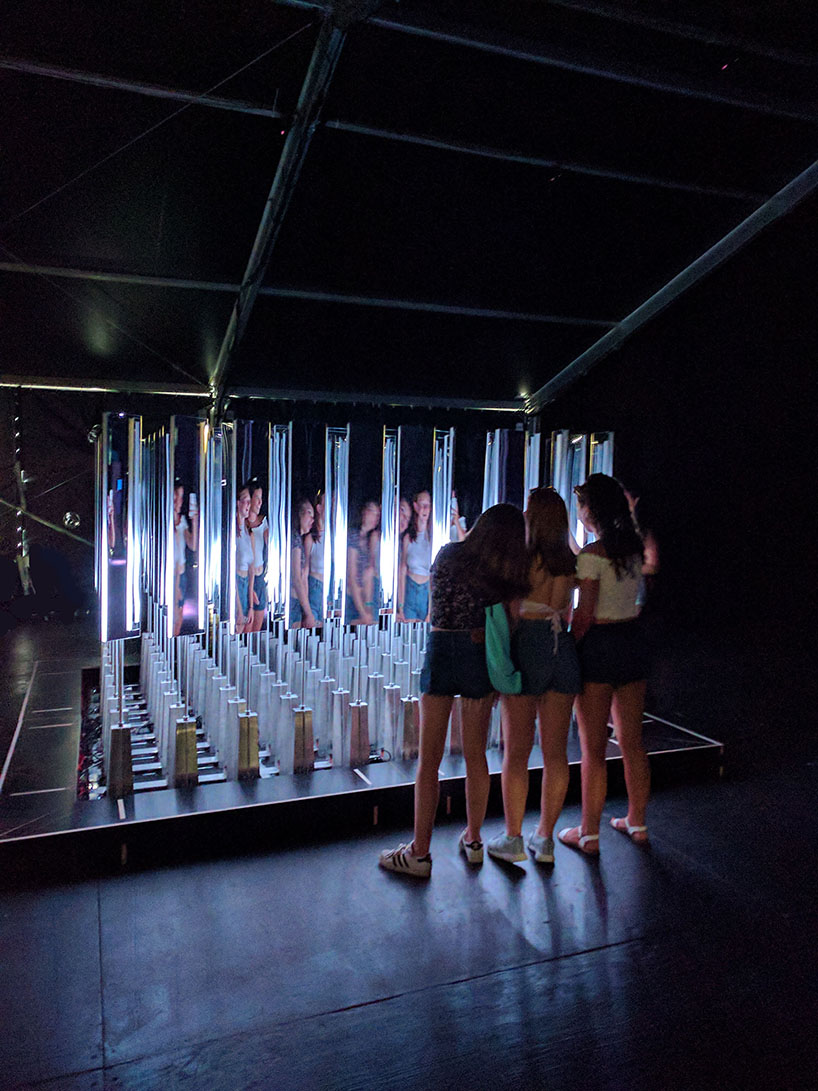
the reflections of participants were multiplied into vertical slices as the mirrors tracked their movement
designboom has received this project from our ‘DIY submissions‘ feature, where we welcome our readers to submit their own work for publication. see more project submissions from our readers here.
edited by: lynn chaya | designboom
